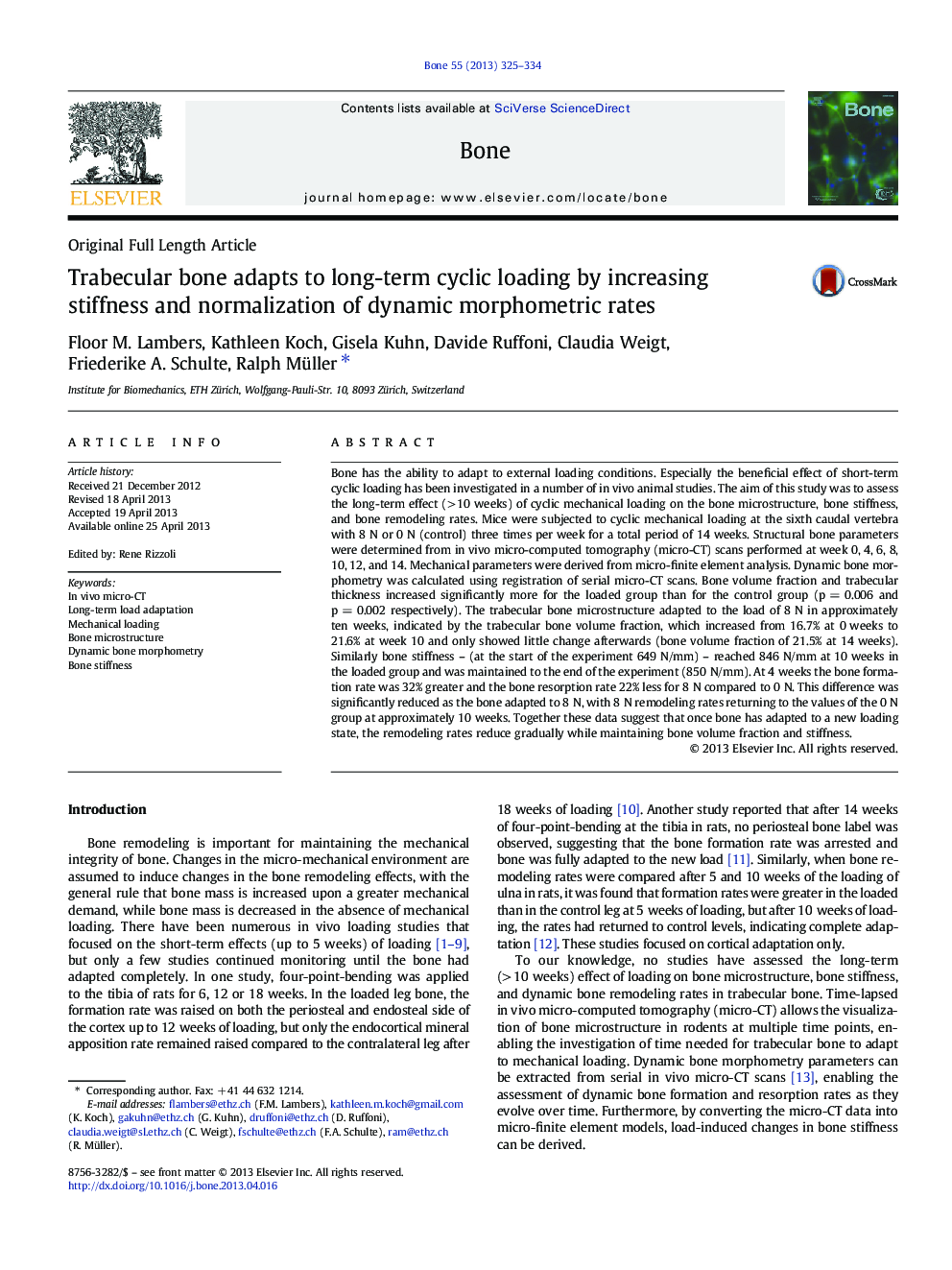| کد مقاله | کد نشریه | سال انتشار | مقاله انگلیسی | نسخه تمام متن |
|---|---|---|---|---|
| 2779222 | 1153256 | 2013 | 10 صفحه PDF | دانلود رایگان |

• Long-term effect of cyclic mechanical loading was assessed in murine trabecular bone.
• Bone microstructure adapted to 8 N in ten weeks.
• Bone stiffness peaked at ten weeks and remained constant until the end of experiment.
• After adaptation, bone remodeling rates gradually approached control levels.
Bone has the ability to adapt to external loading conditions. Especially the beneficial effect of short-term cyclic loading has been investigated in a number of in vivo animal studies. The aim of this study was to assess the long-term effect (> 10 weeks) of cyclic mechanical loading on the bone microstructure, bone stiffness, and bone remodeling rates. Mice were subjected to cyclic mechanical loading at the sixth caudal vertebra with 8 N or 0 N (control) three times per week for a total period of 14 weeks. Structural bone parameters were determined from in vivo micro-computed tomography (micro-CT) scans performed at week 0, 4, 6, 8, 10, 12, and 14. Mechanical parameters were derived from micro-finite element analysis. Dynamic bone morphometry was calculated using registration of serial micro-CT scans. Bone volume fraction and trabecular thickness increased significantly more for the loaded group than for the control group (p = 0.006 and p = 0.002 respectively). The trabecular bone microstructure adapted to the load of 8 N in approximately ten weeks, indicated by the trabecular bone volume fraction, which increased from 16.7% at 0 weeks to 21.6% at week 10 and only showed little change afterwards (bone volume fraction of 21.5% at 14 weeks). Similarly bone stiffness – (at the start of the experiment 649 N/mm) – reached 846 N/mm at 10 weeks in the loaded group and was maintained to the end of the experiment (850 N/mm). At 4 weeks the bone formation rate was 32% greater and the bone resorption rate 22% less for 8 N compared to 0 N. This difference was significantly reduced as the bone adapted to 8 N, with 8 N remodeling rates returning to the values of the 0 N group at approximately 10 weeks. Together these data suggest that once bone has adapted to a new loading state, the remodeling rates reduce gradually while maintaining bone volume fraction and stiffness.
Journal: Bone - Volume 55, Issue 2, August 2013, Pages 325–334